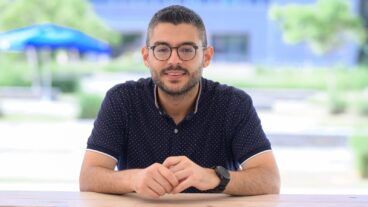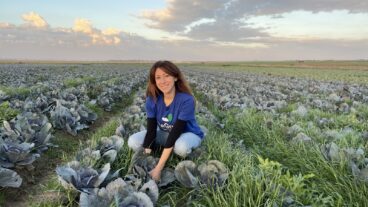Dr. Raymond Kaempfer: I knew that I wanted to make a contribution beyond my personal ambitions and goals.As a young boy who spent the early years of his life hiding from the Nazis, Dr. Raymond Kaempfer was threatened by those who wanted to wage war on the innocent.
Today, the Israeli scientist’s breakthrough research – which won a massive $5.6 million grant from the US government last week – represents an important step towards protecting the children of the future from the threat of deadly biological warfare.
The award to Kaempfer, the Philip Marcus Professor of Molecular Biology and Cancer Research in the Department of Molecular Virology at the Hebrew University Faculty of Medicine, represented the largest grant ever awarded to an Israeli researcher by the US National Institutes of Health (NIH)
Kaempfer received the grant to further his development of a broadly effective drug against a family of toxins called superantigens.
Superantigens are deadly toxins produced by staphylococcal and streptococcal bacteria that even in very low amounts can incapacitate humans, posing a bio-terror threat.
These toxins are also responsible for a majority of fatal toxic and septic shock cases, yet no drug or vaccine against them is available. Toxic shock, caused by staphylococci and streptococci bacteria, can kill with 24-48 hours, so quickly that diagnosis of the responsible agent is not possible.
“The money is wonderful, but it represents a heavy responsibility to make sure that this mission is fulfilled,” Kaempfer told ISRAEL21c.
Kaempfer was born in Holland, just before World War II began. From the age of two, he was in hiding in ten different locations, all of them separated from his parents. He emerged from the experience “a seasoned survivor” at the age of five. Miraculously, his parents also survived – his mother in hiding and his father in a concentration camp – but when he returned to them, they were virtual strangers.
The family remained in Holland and he was raised there – he graduated from University of Leiden, and then headed for the United States to do his PhD at the Massachusetts Institute of Technology. From there, he moved to nearby Harvard University, first for postdoctoral work, and then as faculty member, spending a total of eight years at the prestigious institution.
But on the road to a successful scientific career in the United States, he made a decision to make a detour – at the age of 34 and with three young children, he picked up and moved to Israel.
“I knew that I wanted to make a contribution beyond my personal ambitions and goals. It wasn’t an easy move, the conditions at Hebrew University weren’t ideal and it took time to move forward.”
As he did, “the research moved in unexpected directions, as research always does.”
His team was exploring gene regulation in the immune response. “The insight into essential gene regulation in the innate immune response, seemed to be useful for understanding the mode of action for a whole range of toxic proteins.”
The dangerous potential of these proteins is well known – they led the United States to develop toxins in 1960s to bio weapons. By the time then president Richard Nixon ended the biological weapons program in 1969, the US had successfully developed superantigens – which stimulate immune systems far more than regular antigens, sending the body into toxic shock. There are significant fears that similar substances are stockpiled by nations or organizations that pose a threat to the US.
Kaempfer’s longtime connection to the US government began by chance – he was in his laboratory in the early 1990s and working in a direction of identifying the molecular mechanism that made superantigens so deadly.
“At the time, a US army scientist was doing a sabbatical at the Weizmann Institute and came to talk general science. When I started telling him about my work, my colleague got so excited he could no longer sit down, and we worked up a proposal.”
This was how he received his first US Defense Department grant in 1993. It was only then that he became aware of the tremendous amount of work in the area of biodefense that was occurring at the Pentagon – in a small exclusive agency called the Defense Advanced Research Projects Agency (DARPA)
“It sounded like science fiction at the time,” he recalls.
In 1997, Kaempfer became the only non-American investigator working under the auspices of DARPA, which continued to believe in and support his work, choosing it from a range of projects to present to Vice President Dick Cheney in 2001 as one of DARPA’s success stories.
In 2002, Kaempfer received a follow-up $3.1 million grant from DARPA and the US Army for his work, this time with the goal of using understanding of mechanism to design even more potent toxin antidotes. By that time, animal tests had been successful, and the results were exciting.
Kaempfer and his colleagues were able to reveal the molecular mechanism by which the superantigen toxins elicit a vastly exaggerated immune response that leads to death.
They then used this insight to design peptides (short stretches of protein) that block this harmful response in animals, thereby protecting and rescuing them from lethal toxic and septic shock. What remained was an immune response that was adequate to halt the toxins but without the excess that brings on shock. Indeed, once protected, the survivors became immune to further toxin challenges.
“When we saw that our molecules saved the lives of mice exposed to the toxins, we knew we had something of medical importance,” Kaempfer recalled.
Soon afterwards, Kaempfer co-founded Atox Bio Company, with colleague Dr. Gila Arad under the auspices of Yissum, the Technology Transfer Company of Hebrew University, which commercializes promising technologies at the university by establishing new companies. Kaempfer serves as a Chief Scientific Officer at Atox Bio.
In 2005, DARPA’s biodefense program changed gears – the events of September 11 had brought the fight against bioterrorism into the mainstream and the major task of combating it was moved to the National Institute of Allergy and Infectious Diseases (NIAID), an arm of the NIH.
The grant that Kaempfer and Atox Bio have now received is under the Biodefense Challenge Grants program, which encourages private industry to work with academic investigators in order to develop countermeasures against potential agents of bioterrorism.
“Our proposal was rated in the number one position by the scientific review panel,” he said, a significant accomplishment for a non-American institution.
The NIAID summary statement made its faith in the Israeli team’s work clear: “Based on the record achieved so far… this group has an excellent chance for success.”
With the new grant money, the company is forging ahead with a plan that, to have the FDA’s clearance for initiation of human clinical trial with the antidote within three years.
Because they are dealing with a lethal toxin, the clinical trials and criteria for approval are designed a bit differently.
“The FDA has devised a new rule applicable to biological weapons – the Animal Rule Act,” Kaempfer explains. “We have met with the FDA at a pre-IND meeting, they were strongly supportive and have validated our product development plan”.
For FDA approval, they will have to be able to show that their antidote effectively blocks toxins in two species of animals and can show that it is safe and without side effects at phase I trials in humans but no phase II and III are required. This is different from other medications, which have to prove efficacy in humans at phase II and III trials – but nobody is going to expose a human being to a lethal dose of toxins for research purposes.
While the US government grant will fund the development of the biodefense drug, work is ongoing at Atox Bio to use the knowledge gained in this research to create drugs for medical needs – the treatment of autoimmune diseases and septic shock. The goal also becomes developing and commercializing treatment for toxic shock.
The NIH grant money makes Atox Bio a unique entity on the biotech scene, explains Uri Danon, the CEO of the company.
“Normally, the amount of time it takes for an early-stage biotech company to become profitable is extremely long. The biodefense product gives us a chance to receive revenues in a shorter time than a normal biotech company,” he said, adding that in a best case scenario, a biodefense product would be ready for FDA licensure as early as 2009.
The vote of confidence from the NIH makes the company an attractive prospect for investors, which is why it is so highly sought after and took a great deal of work.
“The application process is hard work and the competition, was very tough. Our showing was a real accomplishment, Dr. Kaempfer and the rest of the team demonstrated a very high scientific and industrial level. The NIH won’t authorize a grant without recognizing that it is very important technology, that there is no competition pursuing similar research with a well-described product development plan, and that there is a very strong team. It validated our strategy of working only with the best scientists, consultants and subcontractors,” Danon told ISRAEL21c.
He is now focused on raising private placement money to finance the R&D of additional Atox Bio’s products for autoimmune and septic shock that are developed in parallel to the US-funded bioterror product.
“The same molecules we are using against toxic shock for biodefense, are used to treat autoimmune diseases, in a new approach, so there is a vast commercial potential,” he explained. “The good news is that the big financial boost that the US money gives us means that we won’t have to make shortcuts or compromises in the drug development process, raising the probability of success, and hopefully, the sales of the biodefense product will finance the advanced clinical trials of our product for autoimmune medical indications.”
Kaempfer says that he is inspired every day by the teamwork between his laboratory and company and the US on this work – and feels that it reinforces his key life decisions – to save lives just as others had once saved his.
“The main reason I came to Israel, was because I felt I should dedicate myself to humanity rather than my own ego. What we have been doing in partnership with the US government is of that nature. I am so impressed by the high awareness in the US government of the importance of this work – other governments have lagged behind. The US is in the lead in terms of trying to develop countermeasures to bioterrorism and we are proud to be part of that effort, and I see it as something we are doing not only for our own two countries but for the world at large.”












